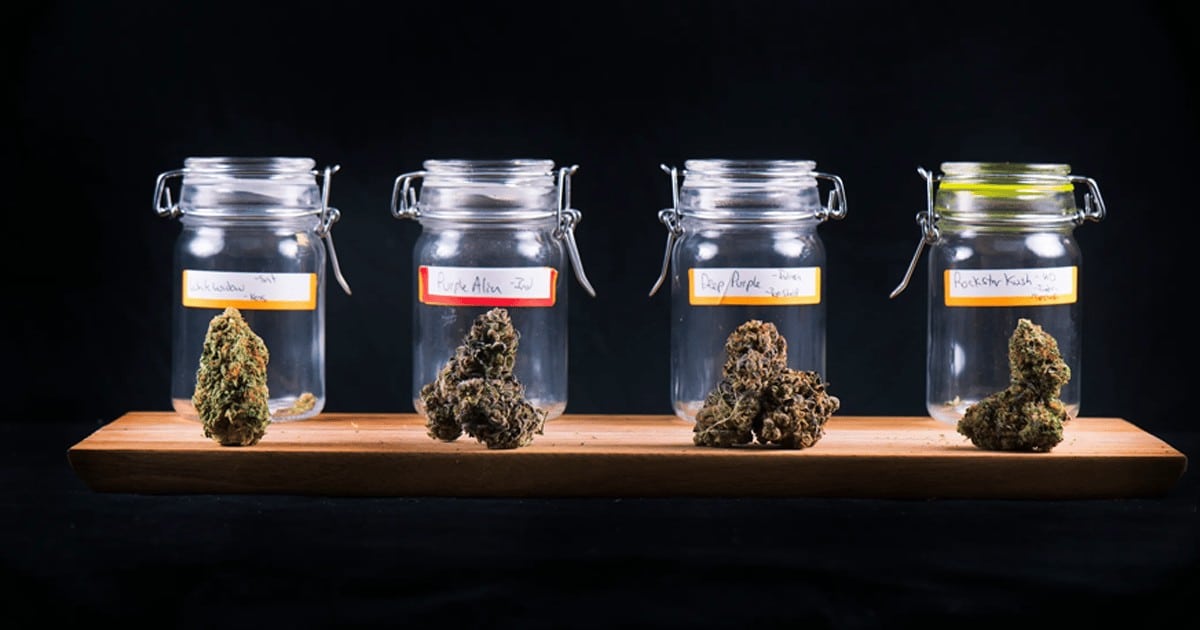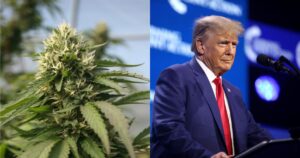The evolution of legal cannabis has resulted in a variety of cannabis-derived goods hitting the market, and consumers rely on goods promoted by using the popular labeling system intended to anticipate the effects of various strains. However, a recent study claims that these labels don’t necessarily correlate with the actual phytochemical composition of cannabis. These findings have ramifications for commercial cannabis classification, animal and human study design, and consumer marketing regulation—all of which are currently separated from the chemical reality of the cannabis-derived material they aim to portray.
The Groundbreaking Study
PLOS One recently published a study analyzing samples from testing labs in six US states, revealing the broadest chemotaxonomic investigation of commercial Cannabis-derived flower to date. Cultivators submitted these samples for testing in order to ensure compliance with state legislation, and they represent cannabis-derived goods planned for retail sale in each state.
They looked into the cannabinoid and terpene content of the samples, as well as conventional industry labeling and popularity metrics provided by Leafly. They identified unique chemotypes that appear consistently across US states and assessed how well the industry designations “Indica,” “Hybrid,” and “Sativa” correspond to these chemotypes, as well as strain name consistency between samples. These findings will, according to the study, open up new avenues for systematically categorizing commercial cannabis based on chemistry, preclinical and clinical research trial design, and commercial cannabis marketing regulation.
The study observed unprecedented phytochemical diversity in the cannabis plant and sought to empirically establish how this diversity is captured by the commercial categorization system. They found that several samples with one label can be confused with samples with a different label. In other words, a sample labeled “Indica” is likely to contain a terpene profile that is indistinguishable from those labeled “Sativa” or “Hybrid.”
Industry labels are thus generally incompatible with the observed underlying chemistry. The Indica/Hybrid/Sativa nomenclature, for example, fails to reliably identify samples based on their chemical makeup, making it exceedingly improbable that this widely used commercial labeling scheme can effectively predict systematically distinct effects.
What This Means For The Industry
To label and advertise products, the cannabis industry uses slang like the classic Grandaddy Purp, or OG Kush to distinguish strains and their psychoactive effects. THC-dominant cannabis strains are said to have different psychotropic effects, like “uplifting,” “euphoric,” “sleepy,” “energizing,” or “creative.” While the scientific community does not approve the commercial use of nomenclature, it is possible that different chemovars of THC-dominant cannabis could have varied psychotropics. In theory, commercial strain names should dependably translate to separate chemotypes if they are suggestive of diverse psychoactive effects in a detectable fashion.
This means that marketing strains as Indica, Sativa, or Hybrid and assuming these labels can correlate with unique psychoactive results is, in effect, false marketing. Strain names, since they come from homogenous cultivars, are often a more accurate label than Indica/Sativa/hybrid, but the study claims this is still far from ideal for informed consumption.
The prevailing labeling system is thus, according to this study at least, an ineffective method of providing information. THC-dominant cannabis products are sold to consumers as if there are clear links between the label and the psychoactive effects of the product, which is misleading because there is currently no strong scientific proof supporting these assertions.
For an industry seeking respect, professionalism, and legality, this presents numerous problems. For CBD-dominant Cannabis samples, the researchers discovered a strong association between total THC and total CBD levels. Because the legal definition of hemp in the United States is predicated on a defined threshold of total THC levels, many CBD-dominant samples would not be classed as hemp in the United States despite low THC:CBD ratios.
While there is observable consistency within individual strains produced by unique cultivars, the study conclusively found that labeling is generally inaccurate and not representative of the chemical composition of cannabis.
For lawmakers, this study introduces new complications for regulations, while producers and marketers may struggle to rectify scientific evidence with cannabis tradition. Labeling cannabis strains with their dominant terpenes may be a better labeling system, but introducing consumers to new terminology and categorization could be a difficult and time-consuming process.
For seasoned stoners, divorcing from the Indica and Sativa labels could be nonsensical or even unnecessary, as ample anecdotal evidence exists to distinguish the two. However, the industry needs to fall in line with current scientific literature to ensure long-standing legality and to meet standards of informed consent. This study represents positive momentum in cannabis research, and the industry will soon follow suit. The future of cannabis labeling could be very different than what we’re used to, but these are exciting developments for consumers, growers, and retailers alike.
Enjoyed that first hit? Be sure to join us for the weekly Friday Sesh for a freshly-packed bowl of this week’s cannabis news.
- Maryland Leads the Way in Cannabis Pardons, Setting an Example for Much-Needed Cannabis Reform
- Military Construction and Veterans Affairs Bill Amendments Could Change Medical Marijuana and MDMA-Assisted Therapy Options for Veterans
- Thailand’s U-Turn on Recreational Cannabis Use
- Chicago Police Department Revises Policy on Searches Based Solely on Marijuana Odor
- Ohio’s Senate Bill 56 Postponed, Leaving Details of Issue 2 Still Unresolved
- Sports Stars and Well Known Entertainers Join Forces Calling on Trump for Cannabis Reform













